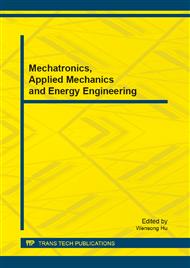[1]
J. W. Byers, M. Luby, M. Mitzenmacher, et al. A Digital Fountain Approach to Reliable Distribution of Bulk Data. Proceeding of ACM SIGCOMM'98, New York, (1998), pp.56-67.
DOI: 10.1145/285243.285258
Google Scholar
[2]
M. Luby. LT Codes. 43rd Annual IEEE Symposium on Foundations of Computer Science, Vancouver, (2002), pp.271-282.
DOI: 10.1109/sfcs.2002.1181950
Google Scholar
[3]
A. Shokrollahi. Raptor Codes. IEEE Trans on Information Theory, Vol. 52, (2006), pp.2551-2567.
DOI: 10.1109/tit.2006.874390
Google Scholar
[4]
J.K. Zao, M. Hornansky, D. Peilun. Design of Optimal Short Length LT codes Using Evolution Strategies. IEEE Congress on Evolutionary Computation (CEC), (2012), pp.1-9.
DOI: 10.1109/cec.2012.6256147
Google Scholar
[5]
Y. Kuo-Kuang, C. Chih-Lung, C. Hsie-Chia. An Improved LT Encoding Scheme with Extended Chain Lengths. International Symposium on Information Theory and Its Applications (ISITA), (2012), pp.11-15.
Google Scholar
[6]
Y. Kuo-Kuang, L. Yen-Chin, C. Chih-Lung, et al. Non-Repetitive Encoding with Increased Degree-1 Encoding Symbols for LT Codes. IEEE Asia Pacific Conference on Circuits and Systems (APCCAS), (2012), pp.655-658.
DOI: 10.1109/apccas.2012.6419120
Google Scholar
[7]
Q. Zhang, D.S. Lin, G. Wu. A Novel Decoding Method for Rateless Codes Basing on Packet Combing. 8th International Conference on Wireless Communications, Networking and Mobile Computing (WiCOM), (2012), pp.1-4.
DOI: 10.1109/wicom.2012.6478327
Google Scholar
[8]
D.J. Mackay. Fountain Codes. IEEE Proceedings on Communications, Vol. 152, (2005), pp.1062-1068.
Google Scholar


